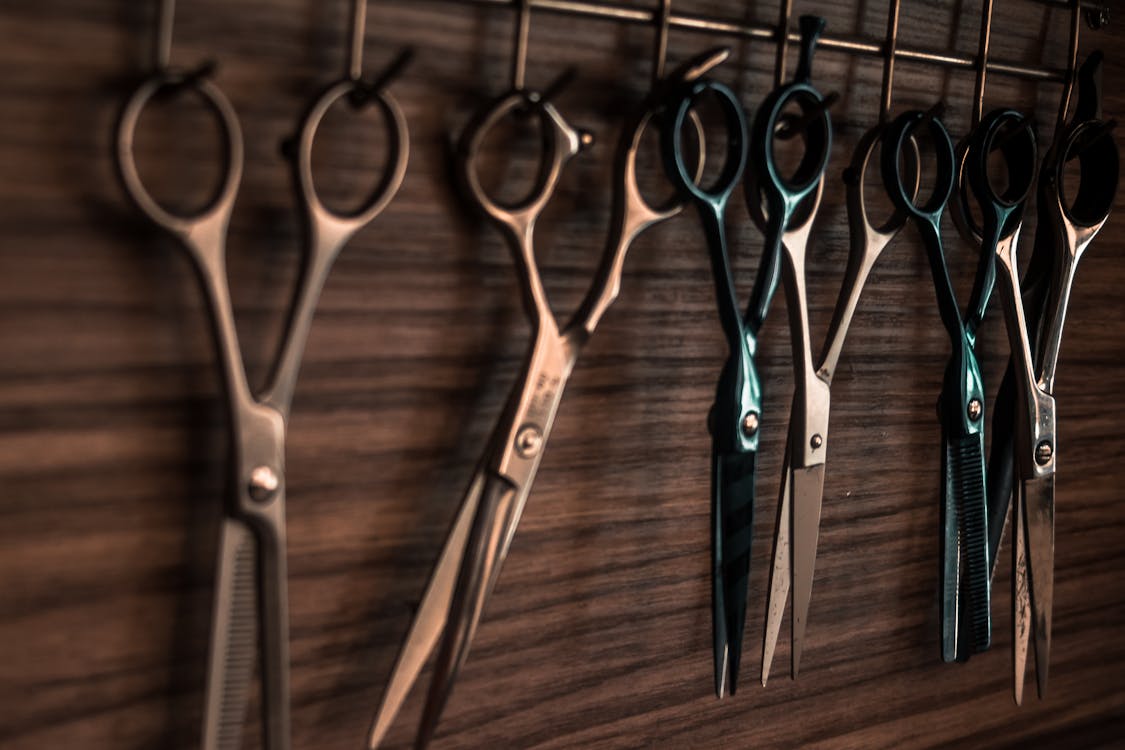Scissor sharpening near me for Vets
Sharpening service for Groomers
As a professional cutter is aware of what it means to use sharp knifes. Not only is it a way to ensure the efficiency of your work and precise, but it also aids in avoiding potential injuries. This is where the honing steel comes in. Honing steel is a vital tool for anyone who is a serious butcher or chef however, What exactly exactly do you mean by it? Why is it important for your knife skills? We'll explore these questions and many more while we talk about the advantages of honing steel as well as the best ways to use it.
What is honing steel?
Honing steel (also called sharpening steel) is a long , slender metal rod with a ridged edge that can be utilized to sharpen and keep the edge of the blade of a knife. It is composed of two components: the rod itself and the handle that houses a secure grip for easy handling. The rod's body is adorned with lines that extend lengthwise across the body. These lines are what form an edge when the knife is passed over them. When honing steel is used properly, it gives an ultra-sharp edge to the blade of a knife that is more durable than were to make use of whetstones and electric sharpeners alone (1).
What are the advantages of honing steel?
One of the primary advantages of honing steel is that it can help extend the life that your blades last. By running your blades frequently over the ridges on the honing steel, you help keep them sharper for longer periods of time by aligning any edges that may have dulled or become jagged over time (2). This will save you time and money over the long haul because you don't have to buy new blades as often! Furthermore, since honing iron isn't as sharp as other tools like whetstones or grinders, it won't damage or wear out the blades as time passes (3).
Another advantage of honing steel is its safety. When used properly it can prevent accidental cuts caused by dull blades by creating sharp, razor-sharp edges every time you employ honing steel (4). When cutting through materials that are tough dull blades could cause slips and nicks. Honing steels on a regular basis can help keep blades sharp and reduce the risk of injury by a large amount.
How do I use my honing iron correctly?
Honing steels properly requires patience and precision; here are some simple steps to begin:
- 1.) Start with a knife that is perpendicular to the rodbut not against it, around 20 degrees (5).
- 2) Moving your knife gently down one side rod, alternating between steady movements until you reach its top; then repeat the motion on the opposite side, applying light pressure with each stroke (6).
- 3) You must ensure that you maintain a consistent angle throughout every stroke. An angle that is too small can lead to an ineffective edge, and excessive angle can cause damage to the blade (7).
- 4) After both sides are completed evenly, slowly move up towards the foundation until both sides are treated before repeating the strokes from base to tip several times, depending on the sharpness you wish the edge of your blade to be
- 5) Finalize by wiping any metal shavings with a damp cloth prior to storing them away for future use!
Conclusion
To summarize the point, honing steels are vital devices for any cutlery user who is looking for the most precise edges on their knives, without creating unnecessary wear and tear caused by abrasive tools such as whetstones or electric sharpeners. Not only will they save you money over time due to extending blade life, but they also create more secure and sharp cutting experience each time you use them! Be sure to take care when using them and always make sure you are patient and careful with each stroke--good luck!
Sharpening Serated Knives
The serrated knives can be used for a myriad of jobs, from slicing vegetables to cutting through tough meats. But when the serrations on the knife start to wear they're time to sharpen them. To do this you'll require diamond sharpening steel. A diamond sharpening tool is a valuable device for any professional or home cook. It allows you to swiftly and precisely sharpen not just knife blades, but also straight edge cutting tools and scissors.
The best method of sharpening your serrated knife is with a diamond cutting edge stone. This kind of stone is constructed from diamonds and is extremely tough. The harder the stone, the sharper the blade. Diamonds can cut through any kind of material quickly. They are utilized to create jewelry , and are very expensive.
But there are many ways to sharpen your sharp knife, without spending thousands of dollars. You can use a regular filet knife or bench grinder or even sandpaper.
There are a variety of stones that can be purchased at local hardware stores. Many prefer using the emery papers which are a little cheaper than diamond stones. If you're looking to achieve the best outcomes, then go for a diamond stone.
What is a diamond that sharpens steel?
A diamond sharpening rod (also known as honing rod) is a vital tool for keeping your kitchen knives razor-sharp. It has a diamond abrasive surface, making it ideal for sharpening both straight-edge blades and serrated edges. The diamond's fine grit surface assists in removing burrs and scratches from the edge of the blade while also realigning the metal fibers so that they overlap perfectly as you reconnect the blade's edge. This ensures that the knife will hold its edge for longer than with other types of sharpening stones or rods.
Using diamond Sharpening Steel to Sharpen serrated knives
Sharpening serrated knives involves specific methods that differ from the ones used for straight-edged blades. Before using your diamond sharpening steel, make sure that you study the manual of the product carefully since the instructions may differ depending on the type of rod you've purchased.
- Step 1. First, you need to use a soft cloth to clean off any food or dirt from the blade. After that, you'll use your diamond sharpening device to improve the sharpness of the blade.
Step 2. Place the handle of the diamond sharpening tool firmly in one hand. Hold the serrated blade of your knife against its lengthwise face at an angle between 20deg and 30deg relative to its lengthwise side (as illustrated in Figure 1). - 3. Gently slide through the blade's lengthwise sides in alternating backward and forward motions until all serrations have been brushed on it numerous times (as shown in Figure 2.). Be careful not to push too hard or move too quickly--this could cause damage to the knife's edge as well as the surface of your honing rod!
- Step 4: After all the serrations of your knife have been brushed across it numerous times Repeat Step 3 over each individual serration until you are getting the results you want (as shown in Figure 3).
- 5. To end the process, you should give every serration a final smoothing stroke using moderate pressure. Clean off any remaining residue using a soft cloth prior to putting them safely away!
Conclusion
Sharpening serrated knives is a bit of a hassle If you're not aware of what you're doing, however when you use the correct techniques and proper care you can keep these tools well maintained with just a few quick strokes of a high-quality honing rod similar to diamond sharpening iron! Use these steps every time you need to touch up or change the shape of your knife's edge--you'll be thankful you made the effort!
More information:
Zdravje in Dom Kombuča shears sharpening knife cutting tools

